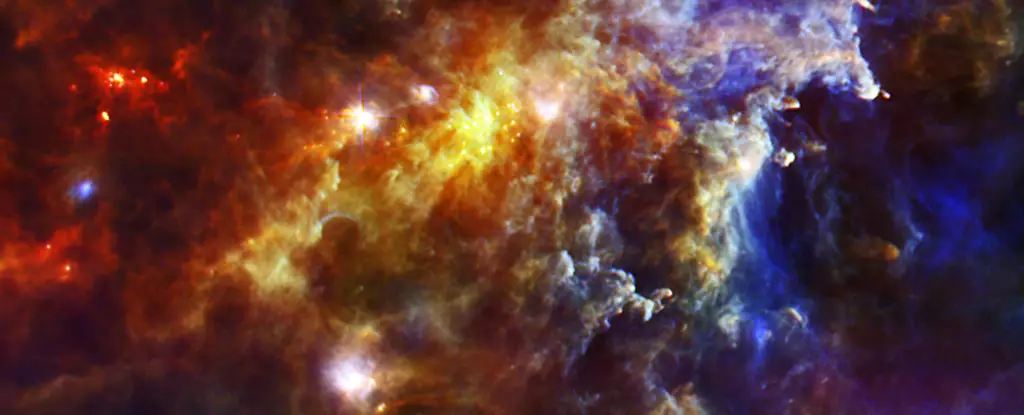The quest to understand the origins of life has always been a hotbed of scientific inquiry. Recent findings by a team from the Massachusetts Institute of Technology (MIT) have contributed significantly to this field by identifying complex organic molecules in a remote interstellar gas and dust cloud. This discovery does not merely add another entry to a growing list of known interstellar molecules; it poses vital implications for how life may have emerged in the universe. The paper detailing these findings was published in the prestigious journal Science, propelling the understanding of life’s building blocks and their cosmic origins.
At the heart of this research is pyrene, classified as a polycyclic aromatic hydrocarbon (PAH). PAHs are structurally complex molecules consisting of multiple carbon rings, making them integral to our understanding of carbon chemistry, which underpins all terrestrial life. The ability to identify such molecules in an interstellar medium suggests that the materials necessary for forming life may have existed in the primordial cloud that birthed our Solar System. This finding strengthens the hypothesis that the precursors to life were delivered from beyond our planetary boundaries, thus transforming our perception of where life’s origins began—on Earth or somewhere far away.
The study of PAHs has long been a focal point in astrophysics, with previous research indicating their abundance in the cosmos. However, the challenge lay in pinpointing specific PAHs. The researchers overcame this obstacle by detecting 1-cyanopyrene, a “tracer” molecule formed when pyrene interacts with cyanide—an element prevalent in interstellar environments. The use of the Green Bank Telescope to observe the Taurus Molecular Cloud (TMC-1) allowed them to uncover the presence of this newly identified tracer, which serves as a proxy for the far more challenging to detect pyrene itself. As the presence of cyanide and its interactions with PAHs are expected in such environments, this methodology represents a significant step forward in interstellar chemistry.
Despite previous convictions that the harsh conditions surrounding star formation would annihilate complex molecules, findings suggest otherwise. The research indicated that pyrene and its derivatives, like 1-cyanopyrene, could endure the conditions typical of star birth. This resilience suggests that crucial elements required for life were not only generated but also retained through tumultuous cosmic events. For the early Earth, which dates back approximately 4.5 billion years, this is a critical reminder of the dynamic interplay between cosmic processes and biological evolution. The implications extend to how quickly life manifested on Earth, appearing in the fossil record around 3.7 billion years ago, indicating a potential rapid emergence facilitated by these complex organic molecules.
What does this discovery entail for our comprehension of life’s origins? While pyrene provides essential raw materials, its existence in the interstellar medium posits that other complex molecules might similarly form under harsh cosmic conditions. The continuum from complex organic molecules found in space to biological life on Earth invites re-evaluation of prevailing theories surrounding the emergence of life. Furthermore, the existence of chiral molecules, such as propylene oxide—identified in previous studies—underscores the possibility that these foundational elements not only exist in space but also are necessary for fostering life as we know it.
In the grand tapestry of life’s origins, each newly discovered molecule serves as a thread that connects astronomical phenomena to biological realities. The detection of pyrene in the Taurus Molecular Cloud not only advances our understanding of interstellar chemistry but also revitalizes the theory that life’s building blocks journeyed from the cosmos into the cradle of Earth. As research continues to shed light on the relationships between interstellar compounds and biological evolution, it becomes increasingly evident that our understanding of life on Earth is but a reflection of a much larger, intricate cosmic narrative. The clues to our origins might indeed stretch far beyond our planet, suggesting life—complex in nature—has a story that spans the universe.


Leave a Reply